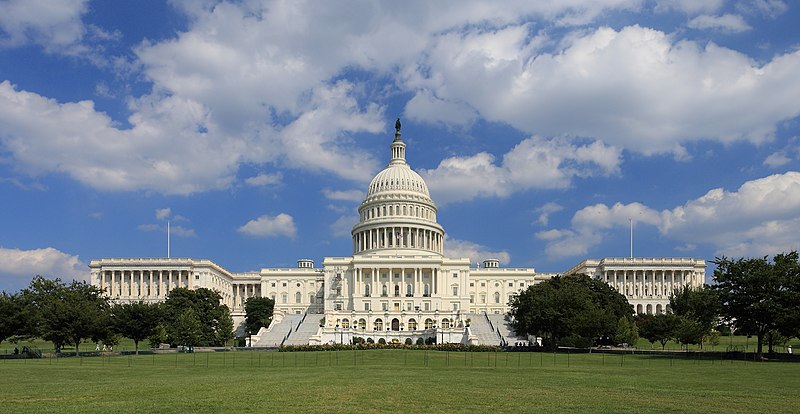How the American Rescue Plan could protect your water
Minnesota could use American Rescue Plan relief funds to improve drinking water and water quality statewide through lead service line replacement and other measures. (Photo: Martin Falbisoner; Wikimedia Commons)
The American Rescue Plan
Following the initial announcement of an ambitious federal American Rescue Plan, FMR and our environmental allies were curious about how such funds might be used to enhance our environment.
The since-approved package (which provides ~$2.6 billion to Minnesota’s state coffers) includes language that specifies that the funds can be used for water and sewer infrastructure.
After years of struggling to adequately fund water infrastructure in Minnesota, we recently reached out to Governor Walz and Lieutenant Governor Flanagan to urge them to allocate $150 million toward water and wastewater infrastructure grant and loan programs, and an additional $15 million to ramp up the inventory and replacement of lead service lines to keep Minnesota families safe.
Our letter to Governor Walz and Lieutenant Governor Flanagan
------
April 12, 2021
Dear Governor Walz and Lieutenant Governor Flanagan,
Thank you for your leadership during these challenging times. You will soon have the opportunity to continue to lead in the pandemic recovery by allocating the funding Minnesota is set to receive under the federal American Rescue Plan (ARP).
On behalf of the undersigned groups, we are writing to urge you to allocate $150 million of these funds for the Public Facilities Authority’s (PFA) water and wastewater infrastructure grant and loan programs and an additional $15 million to ramp up the inventory and replacement of lead service lines that provide drinking water to Minnesota families.
The language of the ARP specifies that state fiscal relief can be used for water and sewer infrastructure, and we believe this is an important use of that funding that will benefit all Minnesotans. Water Infrastructure plays an essential role in protecting Minnesota’s waters through our drinking water, wastewater, and stormwater systems. However, it has become increasingly difficult to build and maintain these facilities due to a variety of issues, including aging infrastructure, the need to upgrade equipment and technology to address known and emerging pollutants, and new challenges posed by extreme weather events related to climate change.
The need for clean water impacts all Minnesotans, regardless of zip code, race, gender, or income level. Our state’s water infrastructure and waterways are interconnected. When it comes to water and wastewater, what happens in one facility impacts not only that specific area, but also downstream communities.
Lead is a highly poisonous metal and can affect almost every organ in the body and the nervous system. Children under 6 and developing fetuses are most susceptible to lead exposure because they absorb more lead than adults and their brains and nervous systems are still developing.
The U.S. Environmental Protection Agency (EPA) estimates that lead in drinking water can be 20% or more of a person’s lead exposure. We need to tackle the lead problem at its source. The most effective way to limit exposure to lead in drinking water is to remove Lead Service Lines (LSLs). These pipes connect a home or other building to the public water main line.
There is no safe level of lead in drinking water. We want communities to be proactive about lead service line removal. Lower-income communities, communities with higher populations of people of color, and with large immigrant populations and English Language Learners often do not have their lines replaced as quickly as wealthier, predominantly white communities. Safe and affordable drinking water is a basic human right and with these funds we can prioritize LSL removal in these environmental justice communities.
Fully replacing all LSLs is not cheap. EPA estimates that it will cost as much as $45 billion across the country to fully replace all LSLs. In Minnesota, the Department of Health estimates it will cost as much as $350 million. For an individual homeowner, depending on multiple factors, the cost to remove an LSL could range between $3,000-$11,000, which is a huge barrier for many people especially those with lower or fixed income.
We greatly appreciate the funding provided for the PFA programs in the 2020 bonding bill. Despite this investment, PFA programs remain underfunded and dozens of critical projects are currently on the waiting list. We urge you and your Administration to include $150 million in funding for the PFA programs and $15 million to begin to assist communities to inventory and remove LSLs as you allocate the ARP funds.
Sewers, wastewater, drinking water facilities, and pipes and pumps play an essential role in ensuring that all Minnesotans have equal access to clean water as well as safe drinking water. These ARP funds would help to achieve these goals while protecting consumers from utility charges and rate increases.
Thank you for your attention to this important matter.
Sincerely,
Minnesota Environmental Partnership
Clean Water Action Minnesota
CURE (Clean Up the River Environment)
Friends of the Mississippi River
Environment Minnesota
League of Women Voters Minnesota
Minnesota Center for Environmental Advocacy
Minnesota Ornithologists Union
Minnesota Trout Unlimited
Minnesota Well Owners Organization
Renewing the Countryside
The Nature Conservancy
WaterLegacy
